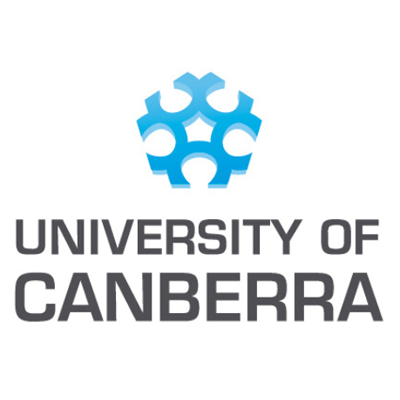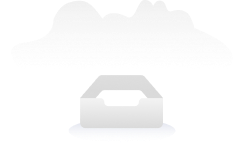Bachelor of Primary Education
University of Canberra








Priority 2 (Medium)
Places nearly full (not over-allocated)|Visa Approval Time: 4-8 weeks queuing for processing
Data updated: 2025-11-13
2026
- Total Tuition Fee130,260 AUD
- Fee Per Academic Year32,565 AUD
- Course Duration4.0 Year (208 weeks)
- Last Updated07-11-2025
Overview
Introduction
Inspire the next generation of primary school childrenThe four-year Bachelor of Primary Education is a rigorous course which will prepare you to teach national literacy and numeracy at a primary school level, from Kindergarten to Year 6. You’ll develop a sound understanding of the educational theories and teaching skills required in today’s classrooms, largely by regularly observing them in a primary school environment and putting your academic learnings into practice during one of the many teaching placement opportunities you’ll undertake.The course’s Pedagogical Content Knowledge (PCK) units across years two, three and four are taught on-site in schools, providing you with regular occasions to interact with children of all primary school age ranges. You’ll become proficient in teaching subjects including English, maths, science, health and PE, humanities and social sciences, and technologies, and will graduate confident, motivated and classroom-ready, eager to make an inspirational difference to the lives of children aged 5 to 12.Study a Bachelor of Primary Education at UC and you will:gain appropriate scientific, literacy and numeracy knowledgelearn the theories and principles that are the foundation for educational practice in primary settingsdemonstrate an understanding of student needs and differences, and the relevance of these to learning in inclusive, indigenous, English as an Additional Language or Dialect (EALD) and mainstream settingsplan and develop appropriate teaching activities for students from a diverse range of backgroundsdevelop and implement effective assessment strategies and carry out evaluation of teaching programs, resources and your own teachingapply the required content knowledge for all primary school curriculum areas to teaching, assessment and reporting methods, alternate/enhanced literacy and numeracy strategies, and the effective use of Information and Communication Technologies (ICT) in teaching and learningreflect on your practice and experiences, and engage in a process of continual improvement.Work-integrated learningA teaching degree, by its very nature, is the embodiment of Work Integrated Learning (WIL), with its focus on compulsory professional teaching practice. During this course, you’ll undertake a minimum of 80 days of practical placement across a range of different primary school levels and settings, culminating in a 30-day teaching placement in your final year.In addition to this, the course content is developed by primary education professionals, and kept relevant and up-to-date through consistent monitoring of, and engagement with, the industry. You’ll undertake authentic assessment tasks which are highly relevant to the day-to-day practice of teaching, and will take part in regular professional development activities, field trips to educational sites, lectures hosted by guest speakers from a range of education and teaching backgrounds, and more.Career opportunitiesPrimary school teacherPrincipalDeputy principalExecutive teacherSpecial needs teacherGifted and talented teacherRelief teacherPrivate tutorSchools policy adviserChildren’s services managerOSHC coordinator (Out of School Hours Care)Schools engagement coordinator.Course specific informationThis course is registered by the ACT Teacher Quality Institute (TQI) and recognised as a teaching qualification throughout Australia.On graduating, students must register with the appropriate state teaching body in order to teach.Students must obtain a Working with Vulnerable People Check before their first placement.Professional accreditationThis course is registered by the ACT Teacher Quality Institute (TQI) and recognised as a teaching qualification throughout Australia.
Key Dates
2025
2026
2027
School Application Steps
Follow the process below, prepare materials in order, and track the progress of each stage.
- 1
Prepare Materials (School Application)
- Organize academic and language materials based on the list of target courses and schools.
- If the requirements are not yet met, you can apply for a language pathway program/packaged course (ELICOS/internal test) first.
- Name the electronic versions of documents uniformly (in English) for easy reuse in subsequent visa applications.
Documents for Adult Applicants
- 2
Briefing on School-Arranged Interview (if applicable)
- Submit application materials, including transcripts, passport, and English proficiency proof, to the State Department of Education.
- School review: The Department of Education recommends schools based on the student's situation, and the school arranges an interview after its review.
- Interview notification: An email will specify the interview time, method (usually Zoom or Teams), and preparation details.
- Interview content: A conversation in English including self-introduction, interests, academic situation, future plans, and a comprehensive assessment of learning habits, adaptability, reasons for coming to Australia, etc. The duration is approximately 15-30 minutes.
- 3
Submit School Application
- Submit the application through the school's official website or an agent's portal and pay the application fee (if any).
- Submit supplementary documents as required and track the admission progress (Conditional/Unconditional Offer).
- After meeting the conditions, pay the tuition deposit and complete the acceptance procedure (Accept Offer).
- 4
Obtain CoE and Arrange OSHC
- The school issues the CoE (Confirmation of Enrolment).
- Purchase/confirm OSHC to cover the entire visa period (including dependents, if any).
- 5
Visa Document Preparation (Subclass 500)
- Organize documents for finances, GTE, English proficiency, and medical examination, ensuring consistency with the chosen course.
- Check the letterheads, dates, translation formats, and certification requirements of visa documents.
Language Requirements
IELTS Score
PTE Score
2026 year(s)
Listening
7.5
Speaking
7.5
Reading
7.5
Writing
7.5
Overall
7.5
School Level
The school's visa assessment level determines the risk level for students applying for a visa and is a significant reference.
For example, if a school's visa assessment level is 2, the applicant will face more restrictions and be required to provide more written evidence, such as proof of language proficiency and financial capacity.

Course Campuses
- ACT
Similar Course
NSW
VIC
ACT
QLD
NT
WA
SA
TAS

No data available~

